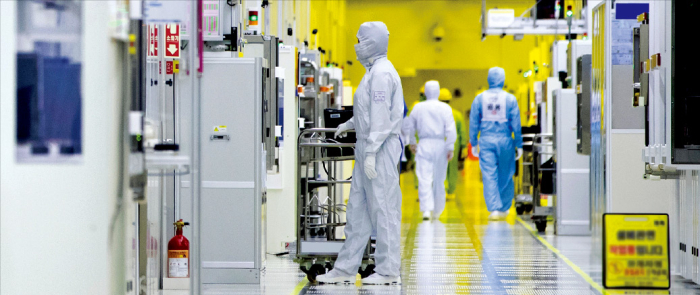
South Korea's Economy Contracts as Political Crisis and U.S. Tariffs Squeeze Growth
South Korea's Economic Contraction: A Perfect Storm of Political Chaos and Trade Turbulence
South Korea's economy has slipped into negative territory for the first time in a year, contracting by 0.2% in the first quarter of 2025 and blindsiding economists who had projected modest growth. The unexpected downturn exposes the fragility of an export-dependent economy now caught between domestic political upheaval and escalating international trade tensions.
"This marks a significant inflection point for what was once considered Asia's most resilient advanced economy," noted a senior economist at a global investment bank in Seoul. "The combination of factors at play suggests this isn't merely a temporary deviation from growth."

The Martial Law Fallout: How Political Crisis Crippled Consumer Confidence
The seeds of the current economic predicament were sown in December 2024, when then-President Yoon Suk-yeol's controversial imposition of martial law sent shockwaves through South Korean society. The ensuing public outcry and institutional instability culminated in his removal from office on April 4, 2025, after months of political paralysis that effectively froze decision-making across both public and private sectors.

In the wake of the political turmoil, consumer sentiment plummeted. Business leaders describe an atmosphere of pervasive uncertainty that has curtailed spending and investment decisions. The Composite Business Sentiment Index cratered to 85.3 in February—its lowest reading since September 2020—reflecting deep pessimism across industries.
Table: South Korea's Composite Business Sentiment Index (CBSI) Trend and Key Events, 2024–2025.
| Month/Year | CBSI Value | Notable Context |
|---|---|---|
| Nov 2024 | ~87 | Start of decline |
| Dec 2024 | Sharp drop | Political crisis: martial law, impeachment |
| Jan 2025 | 85.9 | Four-year low, ongoing uncertainty |
| Feb 2025 | 85.3 | Lowest since Sept 2020, weak domestic demand |
| Mar 2025 | 86.7 | First rebound in five months, export sector recovery |
| Apr 2025 | 87.9 | Slight recovery, but May outlook dips to 86.3 |
"When you have a constitutional crisis of this magnitude, the economic repercussions are inevitable and far-reaching," explained a veteran market strategist based in Singapore. "Companies and consumers alike enter a holding pattern, waiting for the dust to settle before committing capital."
Construction's Collapse: The Foundation Crumbles
Perhaps nowhere is South Korea's economic malaise more evident than in its once-booming construction sector. Investment plunged by 3.2% in the first quarter, marking the fourth consecutive quarterly decline and dragging the year-on-year figures down by a staggering 12.4%.
Table: Recent Quarterly Growth Rates of Construction Investment in South Korea.
| Period | Growth Rate | Basis | Key Notes |
|---|---|---|---|
| Q1 2025 | –12.4% | Year-on-year | Major contraction, led to GDP decline |
| Oct 2024 (Q4) | –4.0% | Quarter-on-quarter | Continued decline in completed construction |
The distress signals are unmistakable: 641 construction firms shuttered operations in 2024, followed by an additional 332 bankruptcies in January 2025 alone—a rate that industry analysts describe as "unprecedented in modern Korean economic history."
Behind these stark figures lies a perfect storm of demographic decline and property oversupply. The inventory of unsold homes has reached an 11-year high, creating a glut that government interventions have thus far failed to address meaningfully.

Table: South Korea's Aging Population Trend—Percentage of Population Aged 65 and Over (1990–2072).
| Year | Percentage of Population Aged 65+ | Description/Notes |
|---|---|---|
| 1990 | 5.1% | Historical data |
| 2008 | 10.0% | Historical data |
| 2017 | 14.0% | Historical data |
| 2019 | 15.0% | Historical data |
| 2023 | 18.2% | Latest official data |
| 2024 | 20.0% | Reached "super-aged" society |
| 2025 | >20% (projected) | Short-term projection |
| 2030 | 25.3% (projected) | Medium-term projection |
| 2050 | 40.1% (projected) | Long-term projection |
| 2072 | 47.7% (projected) | Long-term projection |
In Songdo, the gleaming "smart city" once heralded as the future of urban development, rows of newly completed apartment towers stand eerily vacant—monuments to misaligned supply and waning demand in a rapidly aging society that recently crossed the threshold of having 20% of its population over 65 years old.
Did you know? An aging population can significantly impact a country's economy by shrinking the workforce, increasing healthcare and pension costs, and shifting consumer spending toward age-related services. With fewer workers supporting more retirees, governments may face budget pressures and slower economic growth. However, this demographic shift also opens up new opportunities in sectors like eldercare, healthcare, and retirement services—making innovation and policy reform more important than ever.
The Tariff Shock: America's Protectionism Reverberates Across the Pacific
As if domestic challenges weren't sufficient, South Korea now faces formidable headwinds from its largest trading partner. In April, the United States imposed a sweeping 10% blanket tariff on imports, with particularly punitive 25% duties targeting automobiles and steel—sectors that have long been pillars of Korean export strength.
The impact was immediate and severe. Exports to the U.S. during the first three weeks of April plummeted by 14.3% compared to the same period last year. Overall exports fell by 5.2%, with shipments to China—South Korea's other crucial market—declining by 3.4%.
Did you know that in March 2025, South Korea's exports grew by 3.1% year-on-year, marking a strong rebound driven by surging demand for semiconductors, ships, and technology products? While exports to the European Union soared by 9.8% and shipments to the United States increased by 2.3%, exports to China continued to lag behind, falling by 4.1% compared to the previous year. This trend highlights South Korea’s shifting export dynamics, with robust growth in Western markets even as trade with China remains challenging.
"The Korean export machine has essentially hit a wall," remarked a trade policy expert at a prominent Seoul university. "What makes this particularly concerning is that exports accounted for 95% of last year's growth. When that engine stalls, the entire economy feels the effects."
While the semiconductor industry has shown remarkable resilience with 10.7% export growth, most other sectors are struggling. Automotive exports fell by 6.5%, and home appliances and petroleum products registered similarly steep declines.
The only bright spot appears to be diversification toward alternative markets, with exports to the European Union surging by 13.8%—a trend that analysts view as strategic pivoting rather than organic growth.
Monetary Maneuvering: The Bank of Korea's Limited Arsenal
Facing mounting evidence of economic distress, the Bank of Korea has maintained its policy rate at 2.75% but signaled a dramatic shift toward monetary easing. Governor Rhee Chang-yong recently acknowledged that the economic outlook was "worse than expected," even before fully accounting for the impact of U.S. tariffs.

Market participants now anticipate rate cuts within the next three months, with many betting on a May reduction to counter what the central bank itself describes as "mounting downside risks."
"The BOK finds itself in an unenviable position," observed a fixed-income strategist at a major European bank. "They need to stimulate growth without triggering capital outflows or currency depreciation—a delicate balancing act under the best circumstances, let alone during a period of such pronounced uncertainty."
Foreign investors appear to be pricing in the easing cycle, with South Korea drawing $3.99 billion of bond inflows in March—the largest monthly influx since October 2024.
Fiscal Response: Too Little, Too Late?
The government has proposed a supplementary budget of 12 trillion won ($8.4 billion) to counter the economic slowdown. However, the Bank of Korea's own analysis suggests this fiscal injection would boost GDP by merely 0.1 percentage point—a figure that many economists consider insufficient to meaningfully alter the growth trajectory.

"The proposed fiscal stimulus represents more of a symbolic gesture than a substantive intervention," said a macroeconomic analyst at a domestic asset manager. "Given the structural nature of our challenges, from the construction sector collapse to trade tensions, we need comprehensive policy reform rather than incremental budget adjustments."
Did you know? Fiscal stimulus and monetary stimulus are two powerful tools governments use to boost the economy during slowdowns. Fiscal stimulus involves increasing government spending or cutting taxes to put more money in people's hands and drive demand. In contrast, monetary stimulus is controlled by central banks and includes lowering interest rates or buying financial assets to encourage borrowing and investment. While fiscal measures directly impact consumers and businesses, monetary policy works through the financial system—both aim to jumpstart economic activity but operate in different ways.
The L-Shaped Specter: Risks of Prolonged Stagnation
As institutions revise their 2025 growth projections downward—now clustering around 1.4–1.6%, down from earlier forecasts of 1.5–1.9%—concerns about an "L-shaped" recession are mounting. This scenario would entail a sharp economic contraction followed by a prolonged period of negligible growth—a particularly troubling prospect for an economy that had grown accustomed to robust expansion rates.
Did you know? An L-shaped recession is one of the most severe types of economic downturns—characterized by a sharp decline in economic activity followed by a prolonged period of stagnation with little or no recovery. Picture the letter "L": the economy drops suddenly (the vertical line) and then stays flat (the horizontal line), often for years. Unlike V- or U-shaped recoveries, where growth eventually bounces back, L-shaped recessions signal lasting damage to jobs, investment, and confidence. Japan's "Lost Decade" in the 1990s is a classic example.
The upcoming presidential elections scheduled for June 3, 2025, add another layer of uncertainty to the economic outlook. With policy direction in flux and fundamental questions about South Korea's economic model under debate, businesses and investors alike are approaching the market with heightened caution.
Market Implications: Winners and Losers in the New Paradigm
Financial markets have registered the changing economic landscape with characteristic volatility. The KOSPI index recently touched a 17-month low before rebounding 6.6% when Washington announced a temporary 90-day suspension of "reciprocal" 25% tariffs on all Korean goods.
The Korean won has been hammered to a 16-year low against the dollar as investors price in both growth weakness and anticipated monetary easing.
"The current market dynamics create distinct winners and losers," explained a portfolio manager specializing in Asian equities. "Semiconductor giants like Samsung and SK Hynix continue to demonstrate remarkable resilience and may even outperform during the broader slowdown due to their tariff-exempt status and technological edge."

Conversely, automotive and steel companies face significant margin pressure from the U.S. tariffs, while construction-related stocks continue to underperform amid the sector's structural oversupply issues.
Navigating the Turbulence
For investors and policymakers alike, South Korea's economic contraction represents a watershed moment that demands strategic recalibration. The country's traditional growth model—heavily reliant on exports and construction—appears increasingly vulnerable in an era of rising protectionism and demographic decline.
As the presidential election approaches, the debate over economic priorities has intensified. Some advocate for doubling down on Korea's technological advantages in semiconductors and advanced manufacturing, while others call for fundamental reforms to boost domestic consumption and reduce export dependence.
What remains clear is that South Korea stands at an economic crossroads. The first-quarter contraction may prove to be either a temporary setback on the path to recovery or the beginning of a more profound structural adjustment—one that will reshape the country's economic landscape for years to come.
In the meantime, global investors are closely watching several key indicators: the outcome of U.S.-Korea trade negotiations, the Bank of Korea's policy decisions in the coming months, and the direction of political leadership following the June elections. Together, these factors will largely determine whether South Korea can weather its current perfect storm or finds itself adrift in more turbulent economic waters ahead.